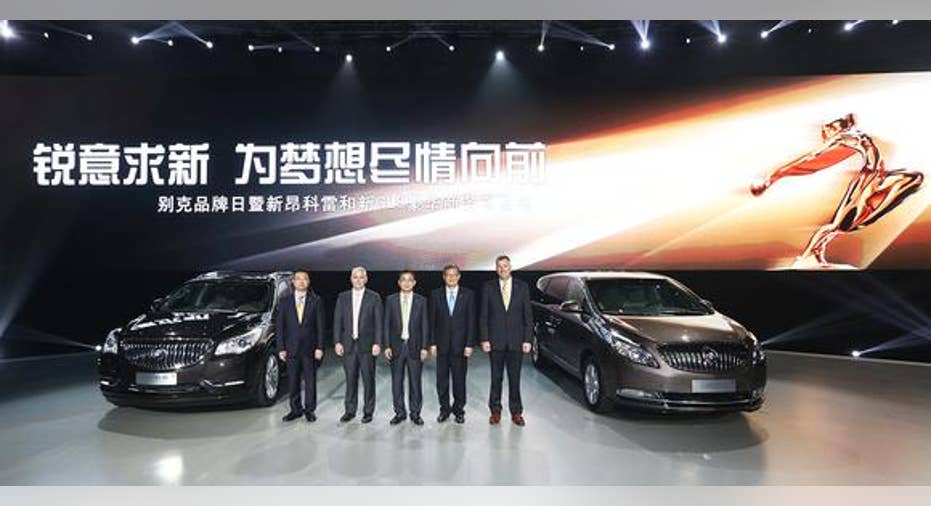General Motors' Growth in China Stalls

Buick's solid sales in China couldn't offset Chevrolet's woes. Image source: General Motors.
After years of booming vehicle sales growth in China, where automakers were jumping over one another to sell vehicles, it's been a rocky few months. Gone -- at least for now --are the days of guaranteed double-digit annual growth. As the Chinese economy slowed, it took a toll on automotive sales, enough so that the government stepped in to bolster them by halving the purchase tax on new vehicles. That move did fuel more sales, but the first two months of 2016 were still a little disappointing for General Motors -- and its investors.
Leads in volume, trails in gains General Motors investors were hoping that Volkswagen Group's diesel emissions scandal would help the Detroit automaker put more distance between itself and its top foreign competitor in China. That story has yet to play out, but one thing that's certain is that GM's combined sales during the first two months didn't move higher.
Looking at February results in China, GM and its joint ventures delivered 245,690 units, a 9.3% year-over-year decline. One major factor behind those lower sales figures was the Chinese New Year, which essentially brings commerce in China to a screeching halt for a couple of weeks. Another issue came from GM's Chevrolet brand, which posted a sales decline of 48% compared to the prior year.
Despite those declines, there were some bright spots in February. Buick continues to be a runaway success in China; its sales rose 16% compared to the prior year, to 70,764 units. Also, sales of GM's more profitable SUVs were up a staggering 115% last month.
Because the (lunar) Chinese New Year shifts between January and February from year to year, it brings heavy volatility to sales figures during those months. To compensate, many analysts combine January and February results to get clearer year-to-year comparisons -- but when you do that for 2016, the results still reflect that GM's China sales have been a little disappointing.
GM's deliveries year-to-date are down 3.7% to 666,713. That's still a great figure in terms of total volume, but it's a loss when GM's competitors are slowly gaining market share. For instance, Ford's sales also declined in February, down 9% to 63,350 units, but year-to-date its sales reached 194,182 units, an 18% gain over the prior year's first two months. Toyota, too, posted a strong 22% gain during the first two months of 2016 in China, compared to the prior year, reaching 190,500 units.
What's next? GM is a leading automaker in the world's largest automotive market, and that won't change any time soon. Ford, Toyota, Nissan, and Honda each sell less than half as many vehicles as GM does in China, but GM doesn't plan to just sit by and watch its market share shrink.
"This year we will continue to improve our product mix to meet the fast-changing customer demand," said GM China President Matt Tsien in a press release. "We are on track to execute our product launch plans. New models, including the Cadillac CT6 and Chevrolet Malibu XL, are expected to add to our growth momentum."
To be honest, I'm not so sure those model launches will be enough to rekindle GM's growth in China, and its sales trend there will be something investors should pay attention to throughout 2016. On the bright side, as long GM continues to dramatically increase its SUV sales, its revenue and bottom line should continue growing in China.
The article General Motors' Growth in China Stalls originally appeared on Fool.com.
Daniel Miller owns shares of Ford and General Motors. The Motley Fool owns shares of and recommends Ford. The Motley Fool recommends General Motors. Try any of our Foolish newsletter services free for 30 days. We Fools may not all hold the same opinions, but we all believe that considering a diverse range of insights makes us better investors. The Motley Fool has a disclosure policy.
Copyright 1995 - 2016 The Motley Fool, LLC. All rights reserved. The Motley Fool has a disclosure policy.



















